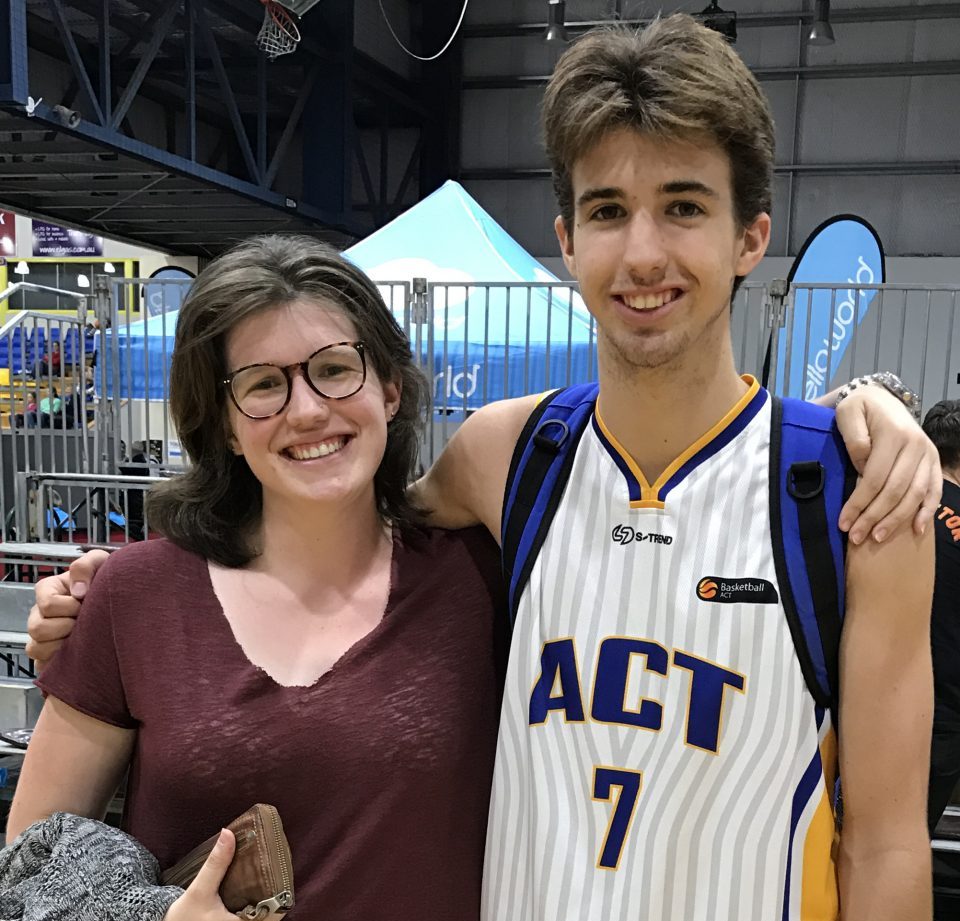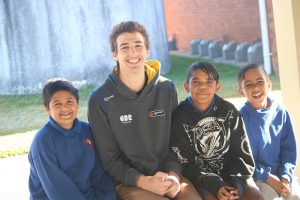News
Lily Martin (class of 2011) – reflects on her G-trip experience as her brother returns from G17
When G1 tentatively ventured 1,000 kilometres north (on a trip that was initially intended to explore further the work done by the Gunawirra organisation with Indigenous preschoolers and their families), collegian Lily Martin (class of 2011), now aged 23, was one of the service pioneers who willingly put her hand up to go. Now Lily's younger brother James has followed in her G-footsteps.


James Martin on his 2017 G Trip
By George Huitker, Director of Service Learning
In late June the 17th Gamilaraay (G17) trip to north-western New South Wales set off for yet another chapter in our developing and blossoming relationship with the people of the region. In many ways, it is hard to believe that over 350 students and a dozen staff/collegians have been a part of this service learning initiative. Nearly all have returned from their trips with a feeling that they have gained more than they have given in spending time alongside rural people living life in often stark contrast to their own.
Lily Martin on her 2011 G Trip
When G1 tentatively ventured 1,000 kilometres north (on a trip that was initially intended to explore further the work done by the Gunawirra organisation with Indigenous preschoolers and their families), collegian Lily Martin, now aged 23, was one of the service pioneers who willingly put her hand up to go. As Lily tells us, ‘I was lucky enough to go on the first Gunawirra trip (or “G Trips” as they have come to be known). I went to the town of Inverell where I spent a week in a predominantly Indigenous pre-school’. While finding her trip rewarding, she was also confronted with a world vastly different to her own: ‘The G-trip has really changed how I viewed the Australian Indigenous community. I had some deep misconceptions that even I wasn’t aware of. The G Trip forced me to confront those internal biases, and develop a deeper understanding of how these communities function. I have since felt far more confident speaking out about Indigenous issues, and confronting stigma when I see it. The richness of these communities cannot be understated, and it is important that we as Australians come together to work with these communities.
I often find people are well meaning when they want to help Indigenous Australians. However, I have realised that without first-hand experience of these communities and without working with their leaders closing the gap cannot be achieved.
In 2017, six years and 16 trips after G1, Lily’s younger brother James followed in his older sister’s G-footsteps and put his name down to attend G17, along with 23 of his peers, four staff and two visiting ‘Gap’ students from England and Canada. (It is one of the great outcomes of this process that younger siblings nearly always sign up for G Trips if they have had an older brother or sister who has participated.) James had a similarly profound trip, with an itinerary vastly different from what Lily experienced, largely due to developed relationships with the schools that Radford College has committed its time and friendship to in Armidale, Moree and Tingha; the supportive Gamilaraay elders, teachers and various communities of the region; a deeper commitment to and understanding of the history and commemoration of the Myall Creek Massacre; and a waiting list to go on these trips that is full until the end of 2018.
As James reflects, ‘I never would have thought that a tiny tin town called Tingha about 900 km away from my home would teach me so much about the country that I live in. Over the week, this town with so much character taught me more than I have ever known about Indigenous culture, Indigenous stories and the history of the relationship between Indigenous and non-Indigenous peoples’. He concedes that this learning has included some challenging statistics and darker truths revealed through some of the challenging aspects of our national history, yet he remains characteristically positive about what he has experienced: ‘Through what I have learnt I am going to take away so much. I take away with me the value of building relationships and the value of listening. I take away my knowledge of this area of Australia and bear witness to this side of the country’.
He would also concur with his sister’s summation that some of the real G-heroes are the teachers from the various schools: ‘These people dedicate their lives to helping some of poorest Australians and they are truly amazing and inspirational. I was so impressed with how they integrated Indigenous culture into their school.’ And as Lily neatly suggests by way of conclusion: ‘We live in a country that has the oldest sustained living culture and it is important that we all work together preserve it’.
It is wonderful to see Radford families supporting the Gamilaraay trips and other service learning endeavours like it, in some cases over a very lengthy period of time! Long may such sustained friendship and community-building continue.
The Collegians Association supports the Raford G-Trips by providing the money for their petrol out to these remote communities.
